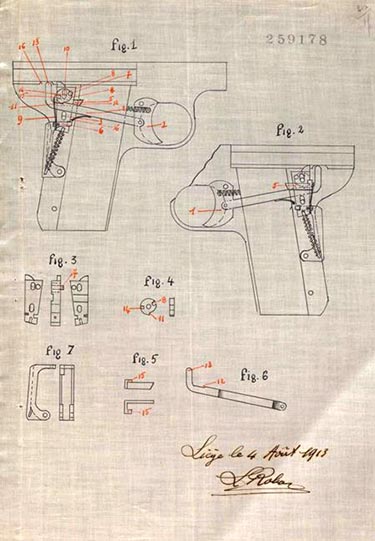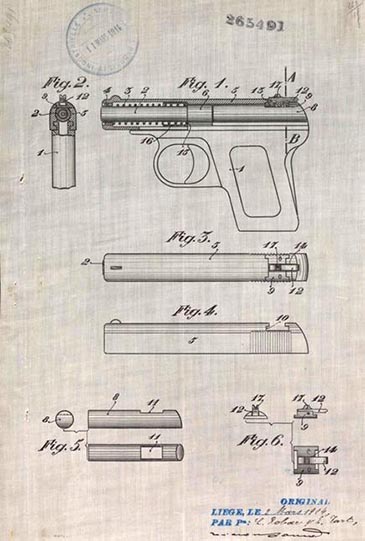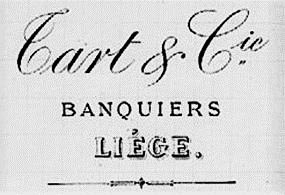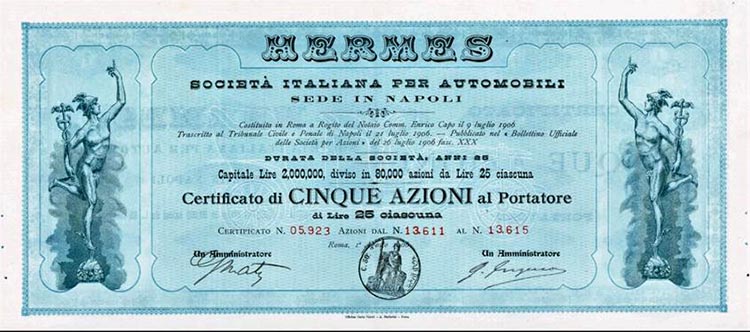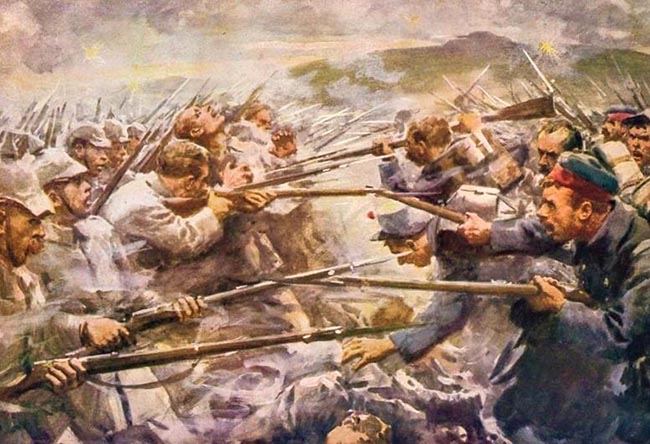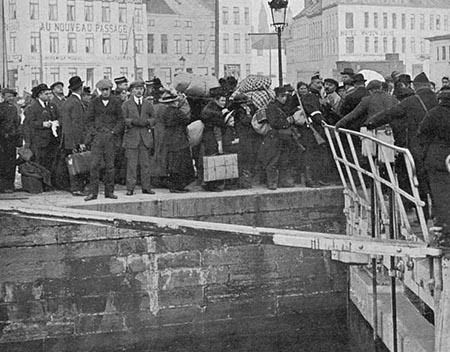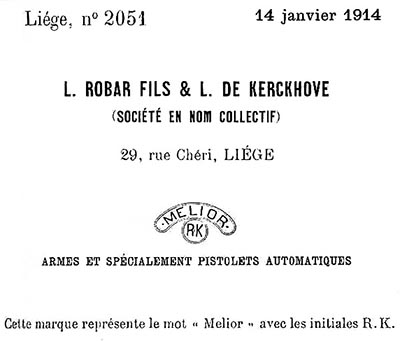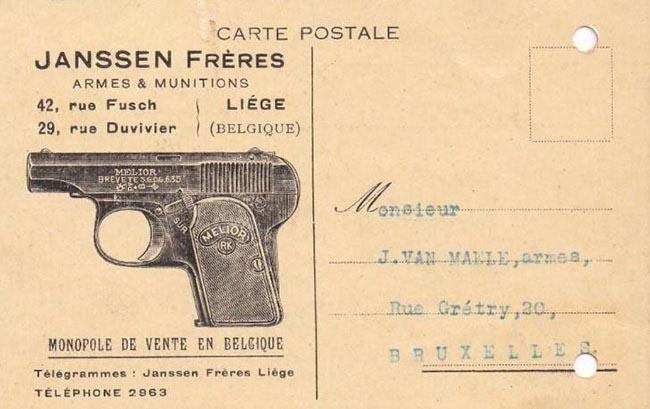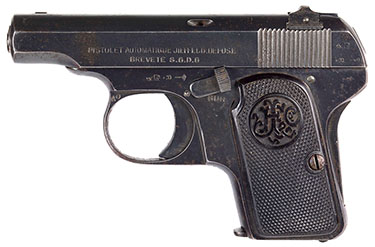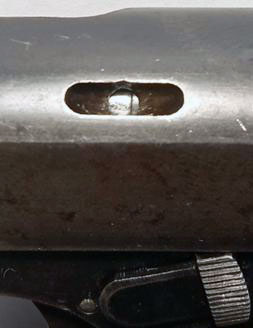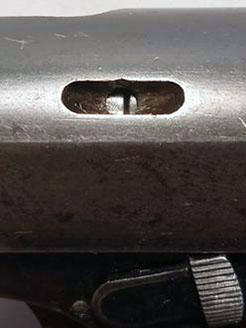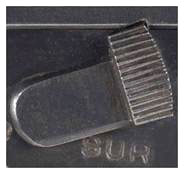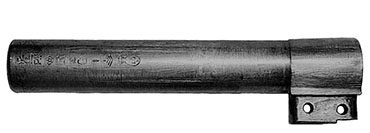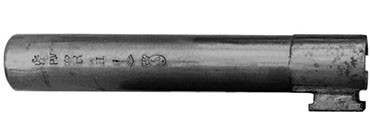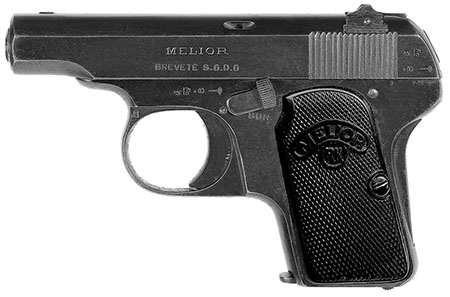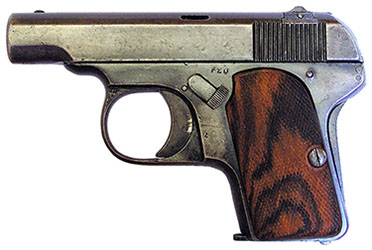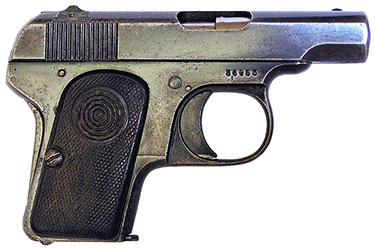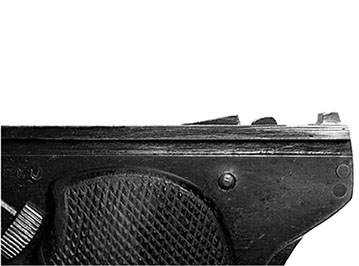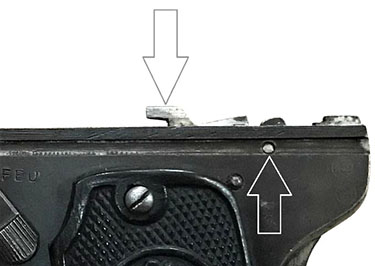 |
|||||||||||||||||||||||||||||||||||||||||||||||||||||||||||||||||||||||||||||||||||||||||||||||||||||||||||||||||||||||||||||||||||||||||||||||||||||||||||||||||||||||||||||||||||||||||||||||||||||||||||||||||||||||||||||||||||||||||||||||||||||||||||||||||||||||||||||||||||||||||||||||||||||||||||||||||||||||
|
History and Development of the Model 1914 Melior and Jieffeco Pistol by Vaclav Vriesen
At this time, Henry Rosier was trying to create a pistol similar to the 1905 Browning automatic pistol model, because the popularity of this Browning model was not fading, but by that time John Browning had already created the 1910 model automatic pistol, which was also very popular. Therefore, Louis Robar, in parallel with Henry Rosier, began work on creating a pistol with looks and features similar to the 1910 Browning, but smaller. Oh, yes, it was a competition with John Browning, and quite successful! Subsequently, the Louis Robar model 1914 pistol could often be seen in advertisements alongside the John Browning model 1910 pistol. On June 16, 1913, Henry Rosier received Belgian patent No. 257387 for an automatic pistol with an external hammer that was similar to the 1905 model Browning pistol. And on August 4, 1913, Louis Robar received Belgian patent No. 259178 for a mechanism for an automatic pistol that formed the basis for the creation of the 1914 model pistol, which Louis Robar wanted to make similar to the 1910 model Browning pistol. In 1914, on March 2, Louis Robar, together with Edmond Tart, received the Belgian patent No. 265491 for an automatic pistol. Based on these two patents of 1913 and 1914, a model 1914 pistol was created.
Edmond Tart, a signatory on the second patent, was an engineer from the University of Liege, who first joined his father's Tart Banque business, where he made his early career.
In 1903, Edmond Tart, together with M. Martiny, founded a company in Liege called Société Mécanique et Moteurs which produced cars and motorcycles. In 1906, Edmond Tart, representing the Liege company Mecanique et Moteurs, together with the Italian Alberto Manzi-Fe, in cooperation with the Belgian racing driver Baron Pierre de Caters, created the Hermes company, which manufactured automobiles until 1909.
When this business ended in 1909, Edmond Tart became sales administrator for the Robar arms factory, to which he continued to contribute until his death. Tart died of an illness on October 12, 1938, at the age of 76. A Difficult Start to Production It is likely that production of the Model 1914 pistol began immediately after the issuance of patent No. 265491 in early 1914. But difficult trials were ahead for Robar's company. On July 26, preparations for a On August 5, after raining artillery fire on Liege, the German regiments went on the offensive against the Liege fortifications. The Belgians returned fire and inflicted heavy losses on the attackers. A bayonet battle ensued at Fort Barchon, in which the Belgian units managed to push back the Germans.
Later, the Germans launched several more attacks, and on August 7 the Germans managed to capture Liege and several bridges over the Meuse. By August 16 the Germans had captured all the forts, except the last one—Lonsen. During the bombing an ammunition depot exploded in the fort, and the Germans managed to completely take over the city. After the fall of Liege, the German troops launched a decisive offensive to the Franco-Belgian border on August 17. The heroic defenders of Liege, holding back the German offensive, made it possible for the Belgian Army to prepare for further battles and also gave thousands of civilians the opportunity to escape to Britain. England considered it its duty and honor to accept refugees from Belgium, as well as to provide them with work and housing.
But Louis Robar's company continued to work during the German occupation. On January 14, 1914, the company L. Robar Fils & L. De Kerckhove registered a logo for the grips of Melior pistols in Liege.
Melior Model 1914, First Variant, Type 1 The 1914 model was produced until about 1930-32. During this period, the model received constant upgrades. Despite upgrades and modernization, the new variations continued in the same serial number sequence. The designers constantly worked on mechanical reliability, improved the shooting qualities, lightened the weight, and tried to optimize production time by reducing mechanical operations. All these processes were reflected in the appearance and mechanisms of this model. Just like the previous models of 1907 and 1911, the Model 1914 was sold under different trademarks that the sellers asked to be placed on the slide and grips, such as Jieffeco, Manufacture Liegeoise d'Armes a Feu, Record, Gladiator, Daisie, and Gladiator Prima, but the primary distributor continued to be the Janssen Fils & Company, which retained a monopoly on the sale of Louis Robar pistols in Belgium. After the First World War the Janssens created the trading company Janssen Frères through which they also marketed the Melior pistol.
Presumably, the serial numbers of the 1914 model pistols did not start with one, but continued the order of the 1911 model serial numbers or were wedged into the order of the 1911 model serial numbers. The first known Model 1914 first variant pistol sold by Janssen Fils & Cie under the trademark Jieffeco has the serial number 36616. This pistol was intended for sale on the French market. The slide of this pistol is marked in French : PISTOLET AUTOMATIQUE JIEFFECO DEPOSE
“Brevete” is French for “patent” and “S.G.D.G.” is a standard French abbreviation of “sans garantie du gouvernement,” meaning “without government guarantee.” On the frame, the marking for the safety lever is in French: FEU (fire) and SUR (safe). There are standard Liege proof markings on the left side of the frame and slide. The assembly number is located on the left side of the trigger guard. This is the batch number of pistols made by the same team of workers without changing equipment and having the same dimensions. On the right side of the trigger guard there is a stamp with the letters RKL arranged in the form of a triangle. The letters RKL stand for - Robar-Kerckhove-Liege. The initials of the gun’s owner are engraved on the right side of the slide—H. V. B. The serial number is stamped only on the frame on the right side. In the range of known pistols with serial numbers 36953 through 37523, the serial number is stamped on both the slide and the frame. The grips on the pistols of the Model 1914 first variation are fixed with a single screw. The change in the attachment of the grips occurred in the range between serial number 44012 and serial number 44797.
This design for a loaded chamber indicator was first patented on October 6, 1911 by the Spanish gunsmith Juan Esperanza Salvador. This loaded chamber indicator design was also used by Spanish gunsmiths Tomas de Urizar, on pistols of the brand "Venus," and Francisco Arizmendi on pistols of the brand "Teuf-Teuf."
Model 1914 pistols of the first variation, up to serial number 37578, have a distinctive L-shaped safety lever. The safety lever fits into a recess in the slide and locks it open to facilitate disassembly. Between serial number 36616 and serial number 36953, this function of the pistol was eliminated. The L-shaped safety lever continued to be used on pistols of this model until serial number 37578, when the company ran out of levers of this form. Another feature of the Model 1914 first variation is the system of attaching the barrel to the frame. The barrels of the pistols of the first modification were attached to the frame with two pins, and in the pistols of the second modification, the barrel was attached by a dovetail fitting on the base of the barrel.
MELIOR
Basically, this modification can be seen in French advertising from 1921 to 1929. In France, Melior pistols of this variation were sold by such companies as Manufacture d’ Armes Franco -Belge in Paris, H. Desgues in Paris, as well as by Balp, which specialized in bladed weapons, and by Depres, which was engaged in the production of bicycles.
The peculiarity of this variation is that it does not have a recess on the slide to allow locking the slide open with the safety lever.
The pistol with the serial number 36953 is the last known pistol of the Model 1914 first variant that has a loaded chamber indicator. This pistol does not have a slide inscription or Liege proofs on the barrel breech block, slide, or frame; it is unmarked except for the RKL stamp on the left side of the trigger guard and the assembly number on the right side of the trigger guard. This is the last of the studied pistols of the model 1914 which has the RKL stamp on the trigger guard. The absence of Liège proofs can be explained by the fact that during the German occupation the Liege proof-house did not function. The first post-war weapons tests at the Liege proof-house took place on February 24, 1919. This variation has another feature - the absence of an ejector.
The ejector appeared on the 1914 model pistols in the interval between the serial numbers 38182 and 38434. This part is attached to the frame with a single pin. Almost all pistols of the following variations have this breech block guide. This pistol SN 36953 has only one original grip on the right side with the destroyed Jf&co logo. At the end of the First World War, when the existing stocks of grips for Melior pistols ran out, Louis Robar used grips with the logo of his main distributor Janssen Fils & Co.. When the stock of factory grips ran out, Robar had grips made of horn and wood. |
|||||||||||||||||||||||||||||||||||||||||||||||||||||||||||||||||||||||||||||||||||||||||||||||||||||||||||||||||||||||||||||||||||||||||||||||||||||||||||||||||||||||||||||||||||||||||||||||||||||||||||||||||||||||||||||||||||||||||||||||||||||||||||||||||||||||||||||||||||||||||||||||||||||||||||||||||||||||
|
|||||||||||||||||||||||||||||||||||||||||||||||||||||||||||||||||||||||||||||||||||||||||||||||||||||||||||||||||||||||||||||||||||||||||||||||||||||||||||||||||||||||||||||||||||||||||||||||||||||||||||||||||||||||||||||||||||||||||||||||||||||||||||||||||||||||||||||||||||||||||||||||||||||||||||||||||||||||
|
Copyright 2021 by Vaclav Vriesen. All rights reserved. |
|||||||||||||||||||||||||||||||||||||||||||||||||||||||||||||||||||||||||||||||||||||||||||||||||||||||||||||||||||||||||||||||||||||||||||||||||||||||||||||||||||||||||||||||||||||||||||||||||||||||||||||||||||||||||||||||||||||||||||||||||||||||||||||||||||||||||||||||||||||||||||||||||||||||||||||||||||||||
|
|
|||||||||||||||||||||||||||||||||||||||||||||||||||||||||||||||||||||||||||||||||||||||||||||||||||||||||||||||||||||||||||||||||||||||||||||||||||||||||||||||||||||||||||||||||||||||||||||||||||||||||||||||||||||||||||||||||||||||||||||||||||||||||||||||||||||||||||||||||||||||||||||||||||||||||||||||||||||||
